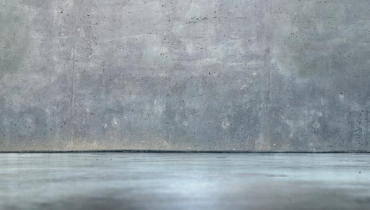
Have you noticed water seeping through concrete floors in your home? Is your garage or basement floor damp? If so, the concrete foundation of your home or garage may be in danger. The good news? Preventing damage could be as simple as sealing your floors.
Read on to learn how to seal concrete floors from moisture.
First, Why Seal Concrete?
Water seeping through concrete floors in a basement or garage leaves your home susceptible to big problems. This water can affect the structural integrity of your home and be a catalyst for unhealthy mold and mildew growth. Over time, with constant exposure to moisture, a small crack in a concrete wall can morph into a big problem, allowing insects and the elements into your house.
Sealing your home’s concrete surfaces is an important type of preventative maintenance. Taking care of your home’s concrete before you have a problem (or larger problem) is key to maintaining your home’s indoor air quality and foundational integrity.
How to Seal Concrete (the Right Way)
There are four key steps to sealing a cement surface like a garage or basement floor the right way: 1) selecting the appropriate sealant, 2) cleaning the surface, 3) fixing cracks, and 4) sealant application.
Follow the instructions below for a quality seal:
- Pick Out Your Concrete Sealer – There are a variety of sealers, so it’s important to select the one that’s best for your project. Here are the options available for concrete surfaces:
- Acrylic sealer – This easy-to-apply sealer is best for basements and other concrete floors that will not come into contact with oil or grease. Acrylic sealer sits on top of the concrete instead of seeping in, which makes it ideal for sealing interior floors.
- Epoxy sealer – More durable than acrylic, this type of sealant protects against grease and oil, and is perfect for a basement, garage or outdoor shed. There are also a few color varieties so you can select your own finish.
- Polyurethane sealer – This type of sealer has a more durable finish than acrylic and epoxy sealer, and it also has UV protection. It’s often used as an overcoat for an epoxy sealer in interior indoor concrete surfaces.
- Siloxane sealer – Lasting for up to 20 years, this sealer penetrates concrete for top protection. This is a common sealant for indoor and outdoor surfaces such as driveways, patios and garages.
- Clean Your Floors
Make sure you take the time to thoroughly clean your concrete floors (or walls) to ensure they’re ready to be sealed. Here are the steps:
- Move all items out of the area.
- Sweep all dirt, dust and debris away with a broom.
- Remove oil, grease, paint and any other stains that may be on your concrete floors. To clean your floors, spray or pour a concrete cleaner onto the floor and use a scrubbing brush or broom (depending on how large the surface area is) to rub it into the concrete.
- Use a hose to rinse the cleaner off the concrete. Be sure to make a plan for drying or draining the floor surface after rinsing.
- Let your concrete fully dry for 24 hours.
- Fill in Any Cracks
After your floors are clean and dry, locate any cracks or holes in your concrete. Repair them by applying concrete repair caulk and using a towel or washable cloth to smooth it out. Let the caulk dry according to the manufacturer’s instructions.
- Apply Concrete Floor Sealant – Once you‘ve selected your sealant and fully prepped your surface, you’re ready to apply the sealant. Here are the steps to successfully apply sealant to your concrete surface (two coats are recommended):
- Make sure windows are open and the area is properly ventilated.
- Apply the sealant with a 9" roller. Use a paintbrush to cut-in, ensuring the corners and edges are properly sealed.
- Let the sealant dry. Make sure to view your sealant directions for recommended drying time. Depending on your sealant, the waiting time can be between two hours and two days.
- Apply a second coat of sealant using both the roller and brush.
- Let the final coat of sealant set for three to four days, or the recommended time on the manufacturer’s instructions, before returning all the items onto the floor.
Choose Rainbow Restoration for Hard Surface Cleaning & Water Damage Cleanup
Have you inherited a seeping concrete floor? Has your home been overwhelmed by a flood? Rainbow Restoration Restoration is here to help.
Our IICRC-certified technicians specialize in hard surface cleaning and water damage restoration services designed to leave your home clean, dry and stain-free. Give us a call us or request an appointment online to get started today.
